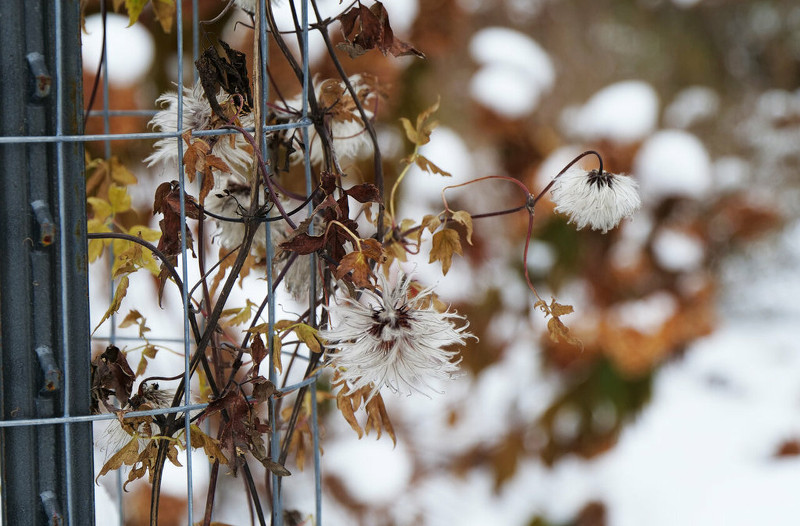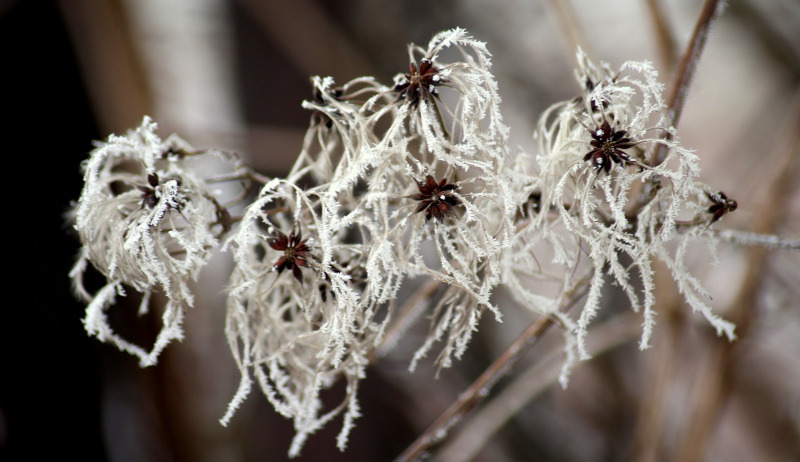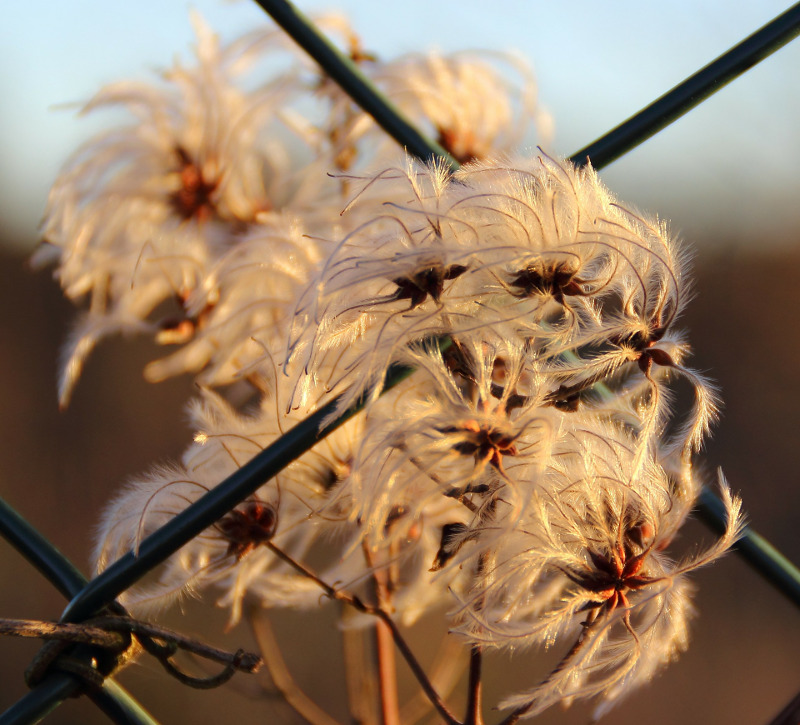Clematis, an exuberant group of vines beloved for their abundant, colorful blooms, include evergreen, deciduous, single- or double-flowered, and even fragrant varieties. Despite the deciduous varieties’ fragile-looking stems, as a group they are quite cold hardy – to USDA zone are still some ways you can help them emerge from winter at their healthiest.

Preparing and Cutting-Back Clematis for Winter
The first step is to simply deadhead spent flowers and trim broken or dead branches.
The clematis family – over 300 species strong – includes deciduous and evergreen types. Deciduous types will lose all their leaves, retaining only twiggy branches.

It’s also crucial to know which pruning group your plant falls under – Group 1, 2, or 3. You can find this out in any description if you know your plant’s variety name. If you have inherited an anonymous vine, here are some guidelines:
Group 1 blooms the earliest, late-winter through mid-spring. They often grow broad, woody stems at the base from 2 to 6 inches across. They need no pruning beyond deadheading and cleaning up any dead stalks. This includes the less-hardy evergreen types like C. armandii, C. cirrhosa or C. fosteri, typically hardy through Zones 6-9. These may need more winter protection depending where you are gardening, in the form of mulch and frost cloth or burlap. Their leaves may suffer some dieback in prolonged freezing temperatures.
Group 2 has a main flush of spring bloom, followed by a lighter summer bloom. It blooms on both new and old wood. This group gets a minor trim in spring and a harder one after spring bloom to encourage that second flush – but no winter pruning. This group performs best in the moderate to warm parts of its range with warmer spring temperatures.
Group 3 are the marathoners – blooming on repeat from late spring all the way through autumn, entirely on new wood. This is the group that needs winter pruning. Group 3 benefits from being cut back hard in winter – down to 18 or 24 inches – delaying new buds to preserve them until warm weather arrives. If you’re not sure whether your clematis is Group 2 or 3, give it a hard winter pruning and note when and how it blooms next year.

Your clematis vine will appreciate a top-dressing of compost mulch of organic material in a circle up to 2’ around its roots. Once the ground freezes, you can consider adding a winter protective mulch of bark chips, pine needles, or even lightweight evergreen branch trimmings. If using branches, remove the mulch in stages as the weather warms, waiting until all risk of frost passes before clearing it away.
Clematis Winter Care in Pots
Note your variety’s hardiness zone and determine how much protection it may need. Some ways to protect your potted plant, besides using a frost-proof container, include:
- Choosing a container allowing at least two inches of soil diameter beyond the roots.
- Site the container against a south- or west-facing wall.
- After the soil has frozen, mulch the plant base up to about five inches deep. You can also wrap the pot in burlap or frost cloth.
If your plant is much more tender than your climate, consider adding extra insulation – stuff landscape bags with dry leaves or hay, and wrap around containers, or create a ring of chicken wire and fill with dry leaves. Remove these protections once all danger of frost is past.
Watering Clematis in Winter
You’ll want to ensure your clematis has a good foundation to make it through the winter, but is not waterlogged. As the weather cools from summer into fall, water less frequently. As plants go into dormancy, they require less water and too much could even rot their roots. However, if a severe cold snap or frost is expected, inoculate your plant by giving it a good soaking beforehand.

Growing Clematis Indoors
Clematis are not likely to thrive inside. Their cells are expecting dips in temperature to signal their dormancy over the winter, which is unlikely in our homes. However, with such a wide range of hardiness, from Zones 3-9, you should be able to find one that is adaptable to your home garden.
Steps to Care for Clematis in Winter
Step 1 - Trim dead flowers and stalks with clean pruners. If your clematis is in Group 3, or you suspect either Group 2 or 3, prune the plant down to 2’ tall.
Step 2 - Water your plant less in the fall, but make sure to water before strong frosts.
Step 3 - Add a topping of compost to the base to nourish the plant for spring.
Step 4 - Once the ground has frozen, mulch your plant with organic matter around the roots up to 2’ around. If your plant needs more protection, consider wrapping it with burlap, frost cloth, bags of leaves, or chicken wire filled with leaves.
Step 5 - When the last frost has passed, remove all winter mulch and coverings.
 |
Author Erica Browne Grivas - Published 12-14-2021 |
